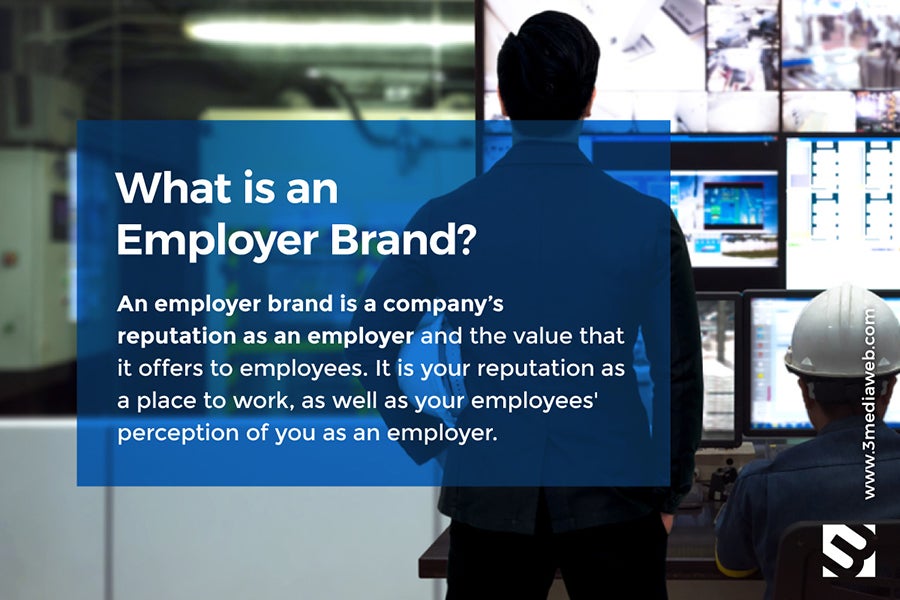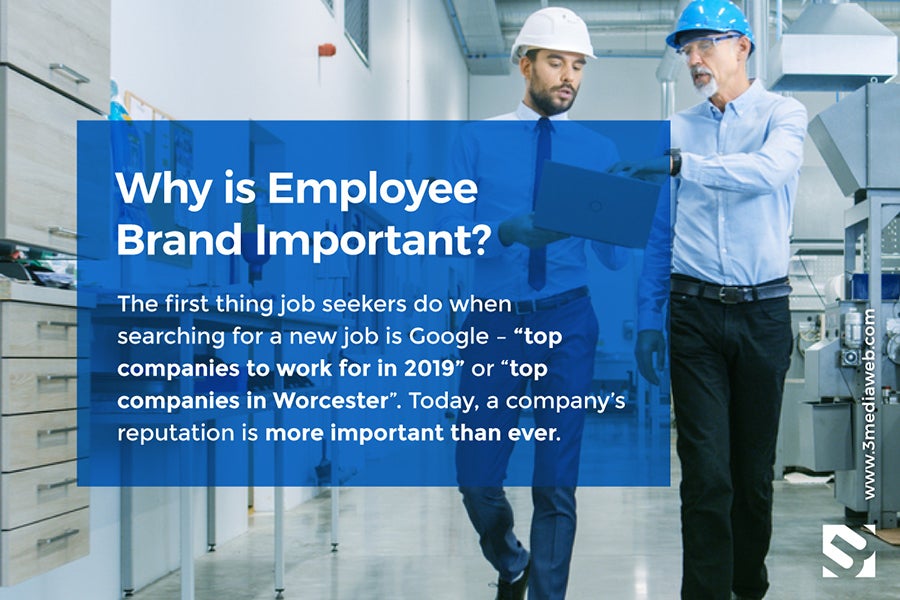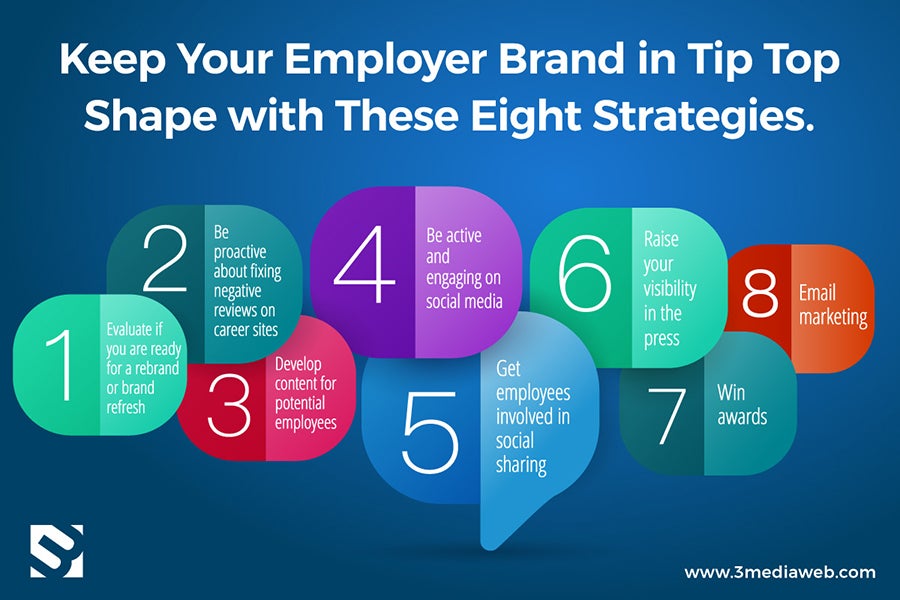Finding talent is tough, particularly in manufacturing these days. During the past few decades, manufacturing has moved offshore and has gained a reputation as being a “dead” industry in the US in terms of job opportunity and growth. It has gained a stigma of not being a “cool place” to work.
That is changing with Industry 4.0 – the digitization of manufacturing. New technologies such as IoT, 3D printing, robotics, data science, and artificial intelligence are transforming manufacturing, making manufacturing a rapid area of innovation and making it “cool” again.
Today, manufacturing represents 10.1% of Massachusetts output and employees 7.8% of the Commonwealth’s workforce. (Source) However, with the unemployment rate hovering between 3.5-4.0%, boomers retiring and millennials uninterested, it is hard for manufacturers to attract and hire talent.
This is why employer branding is more important than ever.
What is an Employer Brand?
An employer brand is a company’s reputation as an employer and the value that it offers to employees. It is your reputation as a place to work, as well as your employees’ perception of you as an employer.
The first thing job seekers do when searching for a new job is Google – “top companies to work for in 2019” or “top companies in Worcester”. Today, a company’s reputation is more important than ever.
In a recent survey, most (86%) respondents said they would not apply for or continue to work for a company that has a bad reputation with former employees or the general public, and 65 percent would likely leave if their employers were being negatively portrayed in the news or on social media because of a crisis or negative business practices. (Source)
When we think of branding, we tend to think about logos and brand messaging but it is all encompassing, including how you present your company to customers as well as employees. It is an ongoing process because the external world is constantly changing and you need to evolve with it.
A positive employer brand helps to attract and retain quality employees, who are crucial to the success of the business. However, employer branding can easily be neglected or even forgotten particularly in times when the company focuses on other aspects of the business and is not actively recruiting.
First Impressions Matter
Your website is likely the first thing potential employees see when they begin to research your company and it has a huge impact on your brand and company image. Today, a website serves as a window into the way a company operates. If it is modern and streamlined, you look like an innovative and well-run company. If it is outdated and has a forgettable or older look and feel, then chances are, the potential employee will move on to another company.
Amazingly, the credibility of your company is so powerfully linked to the aesthetic quality of your website. 75% of consumers admit to making a quick judgment on a company’s credibility based on the company’s website design.
People want to work for innovators.
Your careers page needs to reflect your company brand. Potential employees want more than just a listing of your open positions; they want to understand your culture.
Keep Your Employer Brand in Tip Top Shape with These Eight Strategies
Branding is not a “set it and forget it” activity. It is an ongoing process that needs to evolve as the market evolves.
- Evaluate if you are ready for a rebrand or brand refresh – Throughout a company’s lifespan a discussion of a rebrand will inevitably come up in either a sales, marketing, or management discussion. Do you need a brand refresh (website or logo change) or a full corporate rebrand that requires new messaging and an overhauled look and feel?
- Be proactive about fixing negative reviews on career sites – Proactively monitor career sites for new reviews by employees and ex-employees. If negative reviews contain nonfactual information, then correct it. For example, if an employee or ex-employee claims that you do not have a work-at-home policy – and you don’t – then there is not much you can you or say about it. If you do have a work-at-home policy then ensure that you reply that you do have a policy and point to an online resource that talks about it. If you do not have it at the time but you later institute one, then go back to the negative reviews that mention it and reply that the company recognized the issue and developed a work-at-home policy. This way you demonstrate that you listen and evolve to the needs of your employees.
- Develop content for potential employees – Job seekers will typically download/look at eight content assets before accepting a job position. This could take the form of a company overview, your website, videos of your current employees, benefits information, product information, CEO Q&A, etc. Potential employees want to hear from current employees. A series of blog posts of videos featuring current employees on what they like your companies is a great way to give job seekers an idea of your culture.
- Be active and engaging on social media – Social media platforms such as LinkedIn are the first place most millennial job candidates look at when researching new opportunities. Simultaneously, recruiters are searching to find the best candidates on the same platform. Make sure your brand is active by proactively and programmatically, sharing information on company events, charity initiatives, interesting employees, awards, and training workshops so that your brand looks fresh and inviting.
- Get employees involved in social sharing – Your employees could be your best assets for recruiting. Develop an Employee Advocacy program to make it easy for employees to share company news and content on their networks. Depending on budgets and program parameters, your employees could earn “perks” for becoming an active advocate.
- Raise your visibility in the press – Employees want to be associated with companies that people know about and talk about. Use public relations to raise your visibility in the press with trend stories, new business wins, and profiles about interesting people in your company.
- Win awards – Everyone wants to be associated with a winner. Apply for awards such as “The Best Place to Work” to raise your profile.
- Email marketing – Engage with potential job candidates and keep them informed through automated email marketing.
Talent recruiting has changed and the way people find, research, and apply for jobs has changed. Companies used to be in control of the recruiting process, but now, job seekers start their search on Google. It is easier and faster than ever to discover what a workplace is like, which positions are available, and find salary information. As a result, the employer brand is just as important as the customer-facing brand. People want to work for innovators and recruiters need to think more like marketers and create an engaging, helpful candidate experience.
Lysa Miller, President + Cofounder of 3 Media Web
Lisa Allocca, Principal, Red Javelin Communications
CLICK HERE: New Marketing Playbook for Manufacturing






